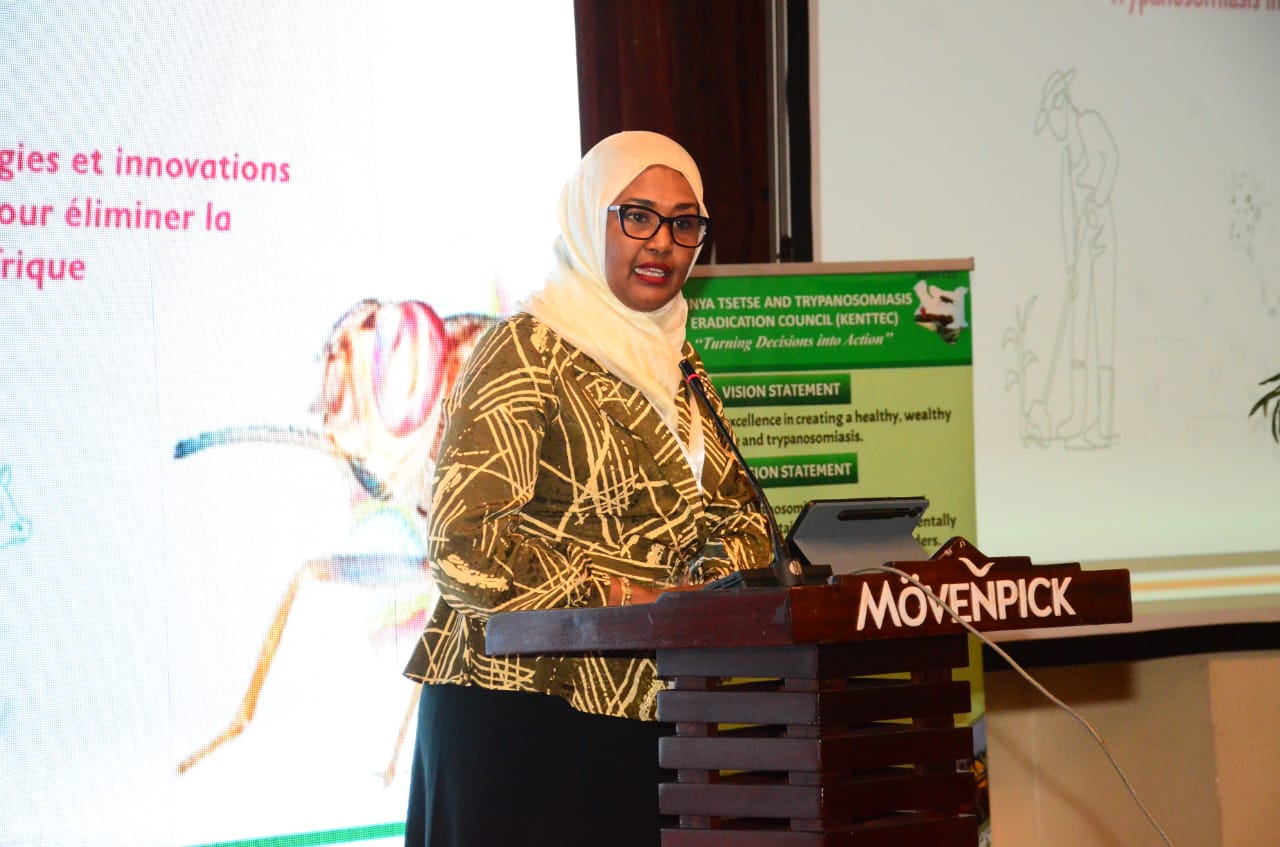By Lenah Bosibori
The African Union (AU) has called for urgent action to develop new drugs and vaccines to fight trypanosomiasis, commonly known as sleeping sickness. Experts say most of the medicines in use today were developed in the 1950s and are no longer enough to protect people and animals.
Speaking at the close of the 37th International Scientific Council for Trypanosomiasis Research and Control (ISCTRC) in Nairobi, Dr. Huyam Salih, Director Inter-African Bureau for Animal Resources (AU-IBAR) stressed the need to invest in research, innovation, and clinical trials for better treatment.
“There is need for a new treatment for trypanosomiasis, the drugs that we are using today some of them have been started to be used since 1950s,” noted Dr Salih. “We need to make sure that we are able to innovate and to mobilize resources not only for the drugs, but also for having trials for vaccination against this disease.”
She added that while progress has been made, such as Kenya eliminating sleeping sickness, there is still a need to match these efforts by combating and eliminating nagana and other forms of trypanosomiasis in animals.
The scientific gathering, which brought together 350 participants, also recommended revival of the Pan-African Tsetse and Trypanosomiasis Eradication Campaign (PATTEC). The initiative had been key in advocacy, laboratory upgrades, and tsetse fly control, but its progress slowed due to reduced staffing at the AU Commission.
“We need to build on PATTEC’s structure and push for its revival,” Dr Salih said. “The concept is still valid, but without dedicated personnel, progress has stalled.”
To address the gaps, AU-IBAR has drafted a continental strategy for tsetse and trypanosomiasis control (2026–2035). This plan, which will be presented for approval in October, is expected to guide regional and cross-border efforts by AU member states.
With the theme ‘One Health: Harnessing Innovation and Technology to Advance Trypanosomiasis Elimination,’ the event highlighted the interconnectedness of human, animal, and environmental health. Under this approach, AU-IBAR, supported by GIZ, is rolling out a digital One Health platform to improve data sharing, modeling, and decision-making across sectors.
“No single country can fight trypanosomiasis alone. Cross-border coordination is crucial,” Dr. Salih reiterated. “With stronger laboratories, political will, and investment in innovation, Africa can accelerate the elimination of this disease and protect the health of both people and animals.”
Kenya’s milestone and ongoing challenges
The conference also celebrated Kenya’s success in eliminating human African trypanosomiasis as a public health problem. However, experts warned that animal trypanosomiasis continues to harm livestock and destroy livelihoods across Africa.
“About 23% of Kenya is still infested with tsetse flies, and this is a big constraint on our livestock sector,” said Dr. Geoffrey Muttai, Chair of the Kenya Tsetse and Trypanosomiasis Eradication Council (KENTTEC).
Dr Muttai also added that KENTTEC has been on the forefront in the control of Tsetse in this country. “We made achievements and we continue to put in area-wide pest control activities to control.”
Further Dr Muttai added that they had scientists from KENTEC presenting what they have been doing and now together all scientists are able to have a forum where they can share their results and be able to publish their papers.
“Exchanging and networking with other countries brings in new control technologies. But I want to stress that other countries are also learning from us,” said Dr Muttai. “We are far ahead in tsetse and trypanosomiasis control, and in many ways, we are mentoring them.”
Dr. Mary Kariuki, who leads the AU One Health Data Alliance project, urged scientists to share research data widely. “When policymakers have access to data, they can make better decisions and allocate budgets to support science,” she said.
AU leaders reminded delegates that no country can win this fight alone. “Cross-border coordination, stronger laboratories, political will, and investment in innovation are all essential,” they said. “With joint action, Africa can speed up the elimination of trypanosomiasis and protect the health of both people and animals.”
Dr. Mary Kariuki, program lead for the AU One Health Data Alliance Africa project, said that AU-IBAR has taken the lead in ensuring that One Health actions are strongly implemented across the continent. As the lead institution for animal health, AU-IBAR recognizes that all sectors must work together.
“One Health means bringing animal, human and environmental health together. All stakeholders must sit at the same table to drive a coordinated agenda and speak with one common voice,” she explained.
She noted that lack of data has been a major barrier, leading to uncoordinated efforts. To address this, the African Union, with support from GIZ, has developed the African Union Digital One Health Platform. The platform will allow stakeholders, especially scientists in the One Health sector, to share their research findings and raw data. These insights will then reach policymakers, helping them make informed decisions and allocate budgets to support scientific work.
“Let’s not keep data locked in our laptops. Let’s share it so that policymakers can use it to support science,” Dr. Kariuki emphasized.
She stressed that it is vital for scientists to share data and findings in ways that decision-makers can easily use. This, she added, will ensure that policies and resources directly benefit end users.
“When we embrace the One Health approach, we achieve wholeness in human, animal, and environmental health. These actions are interconnected, healthy animals mean healthy humans, especially in the fight against zoonotic diseases, and this also helps control the vectors that spread them,” she said.




